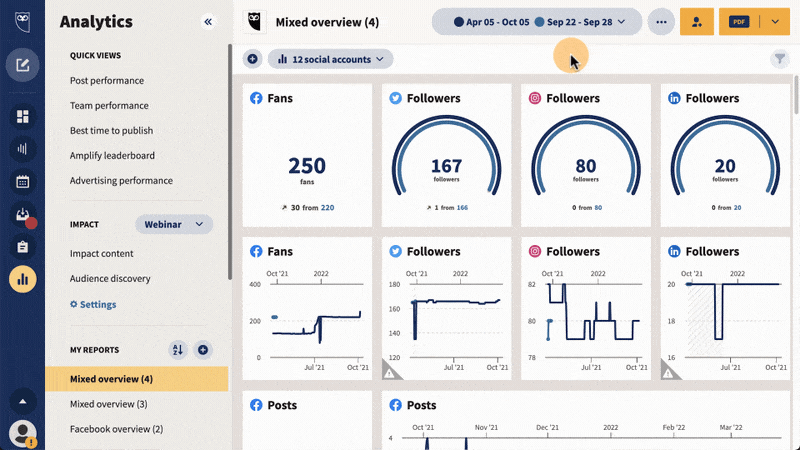What is Social Media Analysis?
Image via PRG Marketing Communications
Social media has become a core part of our lives. For some people, its the first thing they’ll see in the morning, to the last thing they see before falling asleep.
For businesses, it means there is this wealth of data about their audience on these platforms and an opportunity to learn more about what their audience wants to see.
I’ll walk through the basics of social media analytics and how it has become essential for businesses to grow and connect with their audience.
What does social media analytics even mean?
Social media analytics, in itself, is not complicated. It is the practice of collecting various data from social media sites and using it to make business and marketing decisions.
In order to use this data effectively, however, businesses need to set themselves goals that they want to hit, whether that is a certain amount of engagement, influence opinion around your brand, or any other metric the business wants to follow.
Once these Key Performance Indicators (KPIs) are set it is then time to dive into the nuanced nature of social media.
The layers of social media analytics.
Social media analytics has eight main layers of data that businesses can look at. Let’s take a look at each one and the role they play for businesses.
Networks: Who users are friends with, their professional connections, and others they interact with, such as Instagram following, LinkedIn network, and Facebook friends. This helps businesses understand who users like and are more likely to be interested in.
Text: Using text from comments, tweets, and updates to learn more about users' feelings, as well as topics that interest them or they frequently talk about.
Actions: What users are interacting with, posts they are liking, videos that they share with their friends, and any other engagement that they provide on the platform. This helps gauge what users are likely to watch and interact with, as well as what they are likely to share with friends or family.
Search Engines: Looking at search data to process what users are looking for and gain keywords to match up user searches to businesses better.
Location: Mapping where users are posting from, local areas that they frequent, and other information to understand where they would likely go.
Hyperlinks: Looking at how many people click links posted online and the types of links they are most likely to follow.
Mobile: Measuring user’s interactions with mobile applications to better build alongside user behavior.
Multimedia: Seeing what types of images, videos, gifs, and more are effective in gaining engagement to craft visuals and more that can better target users.
The ways to use the data
In addition to the different layers of obtaining data from users, there are a few ways to perceive it. These are Descriptive, Diagnostic, Predictive, and Prescriptive analytics. I’ll dive a little into what these are and how they are used to look at data.
Descriptive: Descriptive Analytics is essentially the most basic version of interpreting data, involving looking at data (or data visualizations) and identifying trends, themes, and more. It is the answer to “what is happening” in accordance with a social media campaign.
Diagnostic: Diagnostic Analytics is the pursuit of why something happened. It is the dive into current and previous campaigns to find an understanding of why something is or isn’t working and having a single list of data that explains that.
Predictive: Predictive Analytics take data to the next level by taking a multitude of data and using it to try and predict future trends. We look at understanding what is going to happen and why and see how the business can create content to fit that predicted result.
Prescriptive: Prescriptive Analytics finally takes things to their maximum by using data from users about their behavior to recommend things that they would possibly enjoy. This type of analytics looks to optimize what users in a variety of groups would enjoy to try and generate the best possible outcome.
Conclusion
Social media has been divisive over the past few years.
While for many, it has been an escape from reality in a way, for businesses and other corporations, it has been a way to learn more about you than you might even know about yourself.
It's one of the reasons we must be more aware of who we’re giving our information to, as companies can easily pop into a scene, look up almost every way to target you on sites you already use, and craft advertisements specifically to get you to spend money.
However, some people like that the content they view is what they want to see. They appreciate that platforms recommend hair products that will work for them or that they get served influencers with the same hobbies as them.
There are so many ways to see it and to look at the data these platforms collect. Everything covered here is merely the tip of the iceberg, with so much more happening every day behind the scenes and even more being developed for the next generation of people online.

